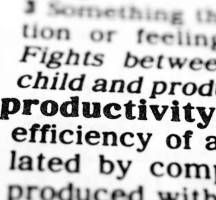January 29, 2015
Collaborative workspace concept is being embraced in the City
 It looks like the collaborative workspace concept is gaining credence beyond the tech start-up fraternity. British Land has announced it is to partner with Central Working, a members’ club which provides growing businesses with infrastructure, support and tools, to open a new club, Central Working City, at 4 Crown Place, next to Liverpool Street station. The move reflects a growing demand from start-ups and entrepreneurs for more collaborative workspaces in the area.The new club will occupy 11,000 sq ft across three floors of the five storey building. Following an extensive fit out the new club will offer members a mixture of shared working space, break out rooms, permanent offices and outdoor space. Profits from the club will be shared between British Land and Central Working.
It looks like the collaborative workspace concept is gaining credence beyond the tech start-up fraternity. British Land has announced it is to partner with Central Working, a members’ club which provides growing businesses with infrastructure, support and tools, to open a new club, Central Working City, at 4 Crown Place, next to Liverpool Street station. The move reflects a growing demand from start-ups and entrepreneurs for more collaborative workspaces in the area.The new club will occupy 11,000 sq ft across three floors of the five storey building. Following an extensive fit out the new club will offer members a mixture of shared working space, break out rooms, permanent offices and outdoor space. Profits from the club will be shared between British Land and Central Working.














 The UK labour market will continue to expand at a strong rate in 2015 but there are unresolved issues relating to levels of pay and how best to increase workplace productivity to drive further growth, according to Mark Beatson, chief economist for the Chartered Institute of Personnel and Development (CIPD) in
The UK labour market will continue to expand at a strong rate in 2015 but there are unresolved issues relating to levels of pay and how best to increase workplace productivity to drive further growth, according to Mark Beatson, chief economist for the Chartered Institute of Personnel and Development (CIPD) in  A report published at the end of December
A report published at the end of December






